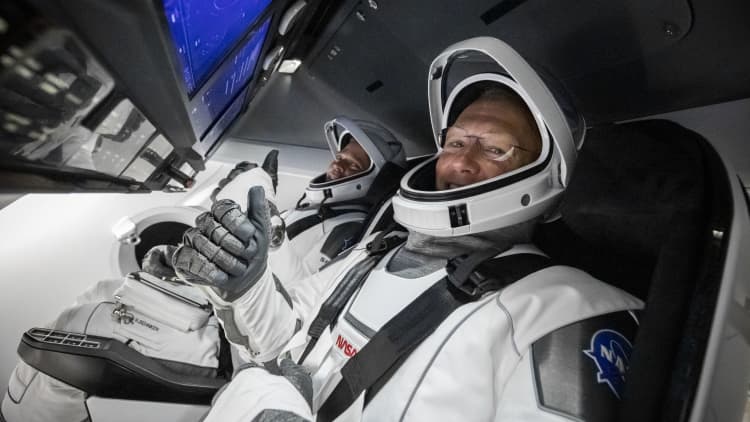The National Aeronautics and Space Administration on Tuesday announced it certified SpaceX's Crew Dragon capsule and Falcon 9 rocket to carry astronauts to-and-from orbit, the first U.S. spacecraft certification by the agency since the space shuttle program nearly 40 years ago.
The certification marks a historic milestone for both NASA and Elon Musk's space company. NASA, under the Commercial Crew program, supplied most of the funding used to develop Crew Dragon over the last six years and conduct hundreds of tests.
"Thank you to NASA for their continued support of SpaceX and partnership in achieving this goal," SpaceX CEO Elon Musk said in a statement. "I could not be more proud of everyone at SpaceX and all of our suppliers who worked incredibly hard to develop, test, and fly the first commercial human spaceflight system in history to be certified by NASA. This is a great honor that inspires confidence in our endeavor to return to the Moon, travel to Mars, and ultimately help humanity become multi-planetary."
Ever since the space shuttle retired in 2011, the U.S. has paid Russia upwards of $80 million per seat to fly astronauts to the International Space Station. The SpaceX certification ends that reliance on Russia, and comes with an expected cost of about $55 million per astronaut. Additionally, as Boeing is also working to complete its Starliner capsule under the Commercial Crew program, NASA estimates that having two private companies compete for contracts saved the agency between $20 billion and $30 billion in development costs.
"This certification milestone is an incredible achievement from NASA and SpaceX that highlights the progress we can make working together with commercial industry," NASA administrator Jim Bridenstine said in a statement.
NASA's certification came after the agency and SpaceX completed reviews ahead of the Crew-1 mission, currently scheduled to launch on Saturday from Kennedy Space Center in Florida. The mission will see SpaceX's rocket and spacecraft carry three NASA astronauts – Mike Hopkins, Victor Glover, and Shannon Walker – as well as one Japanese astronaut – Soichi Noguchi – to the ISS, where they will spend six months conducting research and performing tasks.
"This is a very exciting day for those of us that have been looking forward to this for a really long time," NASA human spaceflight director Kathy Lueders told reporters after completing the Crew-1 reviews.
The agency will also now be able to increase its continuous presence on the ISS to seven astronauts from six, allowing for more time to be spent on scientific research and experimentation.
"NASA's partnership with American private industry is changing the arc of human spaceflight history by opening access to low-Earth orbit and the International Space Station to more people, more science and more commercial opportunities," NASA commercial spaceflight director Phil McAlister said. "We are truly in the beginning of a new era of human spaceflight."
Crew-1 comes about five months after SpaceX successfully completed its Demo-2 flight, which carried NASA astronauts Bob Behnken and Doug Hurley on the company's first ever crewed mission and final Crew Dragon test flight. The Crew-1 mission comes with additional milestones for SpaceX, as it marks the beginning of regular astronaut missions for the company. Between its Crew Dragon and Cargo Dragon spacecraft, SpaceX expects to have a continuous presence in space moving forward.
"Starting with cargo mission CRS-21, every time we launch a Dragon there will be two dragons in space, simultaneously, for extended periods of time," SpaceX senior director Benji Reed said on Tuesday.

Subscribe to CNBC PRO for exclusive insights and analysis, and live business day programming from around the world.


